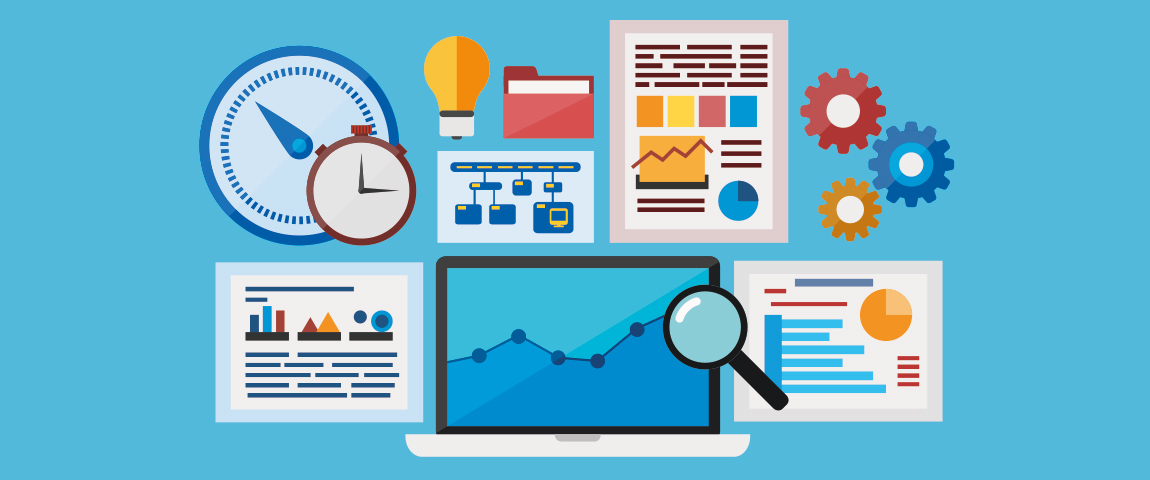pim
8 min
MASTER DATA MANAGEMENT
How You Can Manage Your Master Data
Are you sick of having to search for your data in different data systems? If you manage large amounts of data in your company, a master data management system is the only answer. Only then can you maintain an overview and complete control over your data, and ensure high data quality.
In this post, we reveal the advantages of master data management, and what challenges such a system can solve.
Table of Contents
Master Data Management (MDM) – A Definition
Master Data Management (MDM) is a method of storing, maintaining and managing critical data for your business. MDM lets you consolidate your data: all you need to do is merge information from different databases in one central system. From then on, the data can be further distributed to other systems.
For this purpose, corresponding master data management software ideally provides interfaces to third-party systems like CRM, merchandise management systems, ERP systems (such as SAP) and DAM.
Master data management ensures consistency in large databases, improves data quality and prevents data loss. It also eliminates redundant datasets, also known as duplicates.
The goal is a single point of truth, or in other words, a central database for the entire company. This is
- consistent,
- complete,
- correct,
- clear,
- reliable,
- and current.
What is the difference between master data management and master files management?
Basically, master data management is another term for master files management. Master files are important basic data of a company.
Typical master files include:
- Customer data
- Product data
- Supplier data
- Employee data
- Asset data
- Site data
Master files are static. This means that they are permanently valid, or at least for a long period of time, and do not change. The corresponding datasets are stored long-term and only updated periodically.
Master data management is ideal for maintaining master files. In the best case scenario, the software also handles dynamic data.
Dynamic data is variable. It changes continuously and is only valid for a limited time.
Dynamic data are based on master data and can be used to update these. Examples of dynamic data are:
- Inventory changes
- Prices
- Orders
- Invoices
A master data management software captures all the relevant base data, as well as transaction-related information, in one system.
When Do I Need Master Data Management?
A central master data management system offers many advantages. Here is our list of eight reasons why master data management is right for your company.
1. Company size and sector
Master data management is relevant to companies of all sizes, in all sectors. After all, every company works with numerous different business-related databases. Depending on the scope and complexity, managing this data is more or less time-consuming. For example, many companies use product information management software to maintain their product and customer data.
Companies that produce and handle physical and virtual products in particular benefit from centralized master data management. This includes online mail-order companies with an extensive product range.
Master data management is also attractive for the media sector, for example when building an in-house data library. For instance, TV channels RTL and ProSieben use our 4ALLPORTAL solution to store data regarding all their media content in one place – from text descriptions of images to metadata for films.
2. Quantity and diversity of data
Even more important than the size of the company is the data quantity. If you only work with a small amount of data in your company or organization, it is usually not a problem to manage it using different systems. For example, you might use CRM software to manage your customer data, while using a merchandise management system (such as SAP) to manage your inventory and flow of goods.
If you handle very large quantities or varieties of data, it’s a different story. Then, a master data management system is indispensable in ensuring the consistency and quality of the data. If the data also come from a variety of different data sources, master data management will help you to maintain and overview and collect all the relevant information in one place.
A decent MDM tool can process a wide variety of data types and can easily integrate data from third-party systems.
3. Control over your data
Does every department in your company work with a different database, with little clarity? Are data stored using different systems in parallel? Do you waste time on duplicates and different versions of data? Are you unsure who is using what data, and what for?
Get control over your data again with the help of a master data management system.
- Eliminate data silos: in an MDM, all data are stored in one central location. This prevents important information from getting lost or being forgotten in the depths of data silos. Assign your employees different roles and access rights in the data management software. Then you can control who can view and edit certain data.
- Single point of truth: Draw and distribute data from different systems via interfaces – using one central system.
- Transparency: Version histories and use histories ensure high transparency. You can track every change to your database and have full control over its use.
- Overview: Master data management facilitates monitoring and analysis. You have an overview of all the relevant data at all times, and can use it to make strategic business decisions.
4. Increased data quality
If you work with a series of different systems, there is a risk of maintaining the same data twice and wasting unnecessary storage space on duplicates. There is also an increased risk of having different versions of the same data and of errors creeping in.
Master data management can be used to purify your database. It can quickly identify duplicates and eliminates the effort of maintaining the same data more than once. Data from different sources can easily be migrated and stored in a single system. This makes the data easier to process, for example when merging companies.
5. Management over storage
The big advantage of master data management is that it lets you store, manage and optimally utilize your data.
Take an online shop, for example. You can store all product data and accompanying assets in one place, including:
- article number,
- stock,
- price,
- size, color, variants, etc.,
- product images,
- descriptions,
- flyers,
- and much more.
If a media designer is looking for a certain product in order to place a corresponding product image in a brochure, they can easily find it via self-service in the MDM system. The article number can be used to find all product-related information and assets in a matter of seconds. If the master data management system and shop system are properly connected, product texts and images can even be edited directly in the online shop via the MDM system.
If you only want to save and store data, you don’t necessarily need a comprehensive MDM system. However, if you want to actively work with your master data and dynamic data, you should invest in modern master data management tools like the 4ALLPORTAL.
6. Save money and increase your productivity
Do you waste time looking for the data you need in various different databases? Do you need to make changes to your data in multiple systems? Does it take several days to get a reply from the marketing department when you need a certain product photo?
All these scenarios result in long-winded, time-consuming steps in your day-to-day work. Save time and money and boost productivity with master data management.
- Maintain and migrate your data fully automatically with master data management: This saves time and prevents errors caused by manual maintenance.
- Promote data exchange within your company with MDM: Data can easily be shared with external colleagues, business partners, suppliers and others. Meanwhile, different user roles help you manage different authorizations.
- Save money on your IT architecture: A central data system makes many processes easier and reduces redundant technologies.
- Tools like the 4ALLPORTAL are based on self-service: Data are presented clearly, in a way that everyone can understand. Complex EDP systems with long familiarization times are a thing of the past.
- Benefit from various additional features: For example, you can connect the MDM with web-to-print solutions and a Digital Asset Management system. You can then create printed products or personalized emails using automatically filled-in templates. That way, your design team can focus fully on creative tasks.
- Automatically feed your CMS (such as Typo3, WordPress, Drupal) or shop system with data from your master data management system: For example, if you replace the description text for a product in the MDM, it will also be replaced in the online shop without the need for manual changes.
- MDM can boost the success of your company: High-quality master data lay the foundation for successful business processes, improved customer experiences and increased sales.
Overall, the optimized processes delivered by MDM have benefits at different levels: from an IT perspective, employee perspective, and business perspective.
7. Independent data exchange in the Cloud
Simply use our 4ALLPORTAL solution for master data management as a Cloud application. Then you can leave its smooth, reliable operation to us, saving you yet more valuable resources.
The best thing about the Cloud version? It’s accessible everywhere, for everyone. This makes it easier to work from different locations, including from home. It is also possible to work with external parties via the Cloud. Simply assign the corresponding roles to your employees, customers, suppliers and other partners.
8. Ensure compliance
The functions of the 4ALLPORTAL master data management system make it easier for you to comply with the relevant requirements.
- Data is sent in an encrypted format via eTicket,
- stored on TÜV-certified servers in German data centers,
- and integrated verifiably and securely.
- And personal data is managed in compliance with GDPR.
Managing all your data in one place also allows you to respond to new compliance requirements more quickly and effectively.





